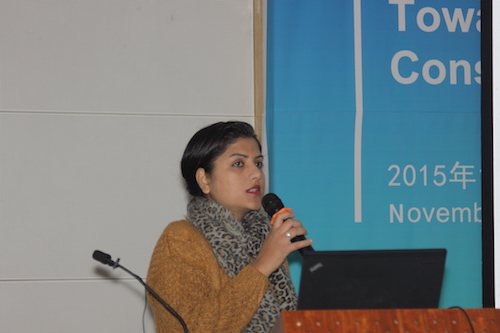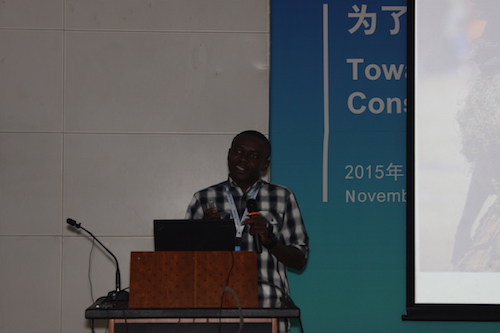On November 7, 2015, the second session of Student Conference on Conservation Sciences (SCCS) was held at the Life Sciences Building of Peking University (PKU).
The conference began with Professor Zhang Peng's talk on the "Cultural views of primates in China and its bio-conservation values". Professor Zhang gave an introduction of primate distribution in China and a comparison of the roots of primatology in Western countries and Japan, which was followed by an overview of records of primates throughout Chinese history, in which he focused on the distinction of gibbons and macaques. He then presented methods of using historical records such as the Di Fang Zhi, art, and poetry to reconstruct the past distribution of macaques and gibbons. Finally, Zhang showed his research group's case study of the last monkey trainer. The speaker concluded that biological research from an ethno-zoological perspective could give insights on how conservation could be improved.

After a 15-minute coffee break, Susana Rostro García from the University of Oxford talked about “Density, Diet and Prey Selection of the Indochinese Leopard”, reporting their findings in Cambodia. Their work included estimating current leopard density by camera trapping, and analyzing their diet and prey selections from their excrement. According to Susana, the current density is about 1.05 individuals per 100 km2. Contrary to what people normally assume, only 0.12% of leopard’s food were from stock animals. This discovery suggests that we should stop to view leopards as a major threat towards sheep and cattle. Indochinese leopards are currently listed as “Near Threatened” on the IUCN Red List. The research group believed that a core conservation area ought to be set for Indochinese leopards and the species needed to be up-listed on the IUCN Red List.

Tashi Rapte Ghale from the Global Primate Network-Nepal, presented on “Diversity and Distribution of Carnivores in Nyeshyang Valley, Annapurna Conservation Area, Nepal”. Firstly, he gave a full description of the Nyeshyang Valley to explain why it was chosen as their study area. They used cameras to capture images of the wildlife and then used the image data to estimate carnivore diversity in the area. They managed to detect the first record of the presence of mountain weasel, Pallas’s cat, and Yellow-throated marten at the highest elevation. Tashi and his group hoped this would help people understand detail ecology, behavior, and conservation threats to the carnivores in the area and implement effective conservation plans for carnivores. In the end, a vivid slideshow and video footage brought audiences back to the Nyeshyang Valley.
Written By: Ge Nan
Edited By: Wei Yuchen



